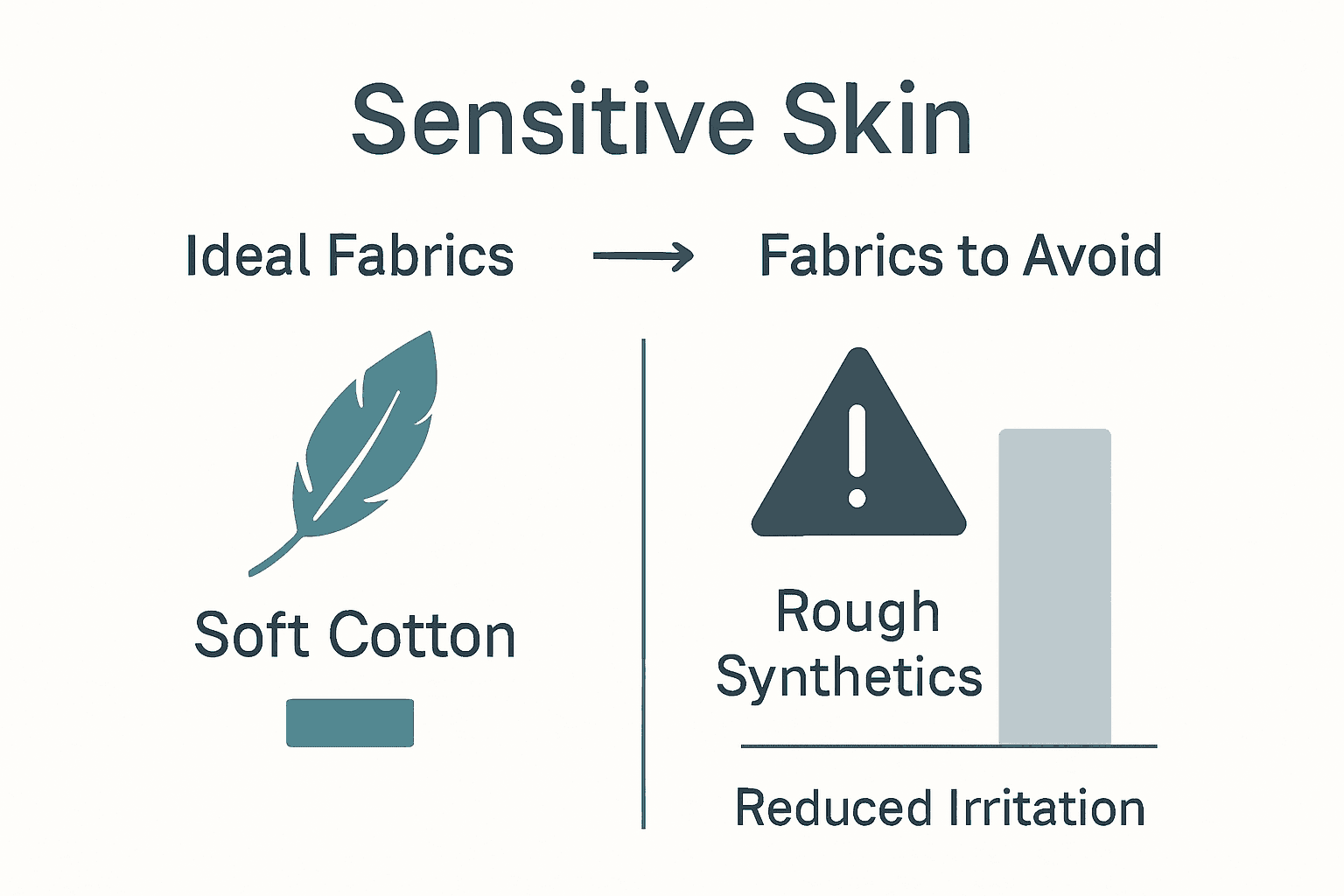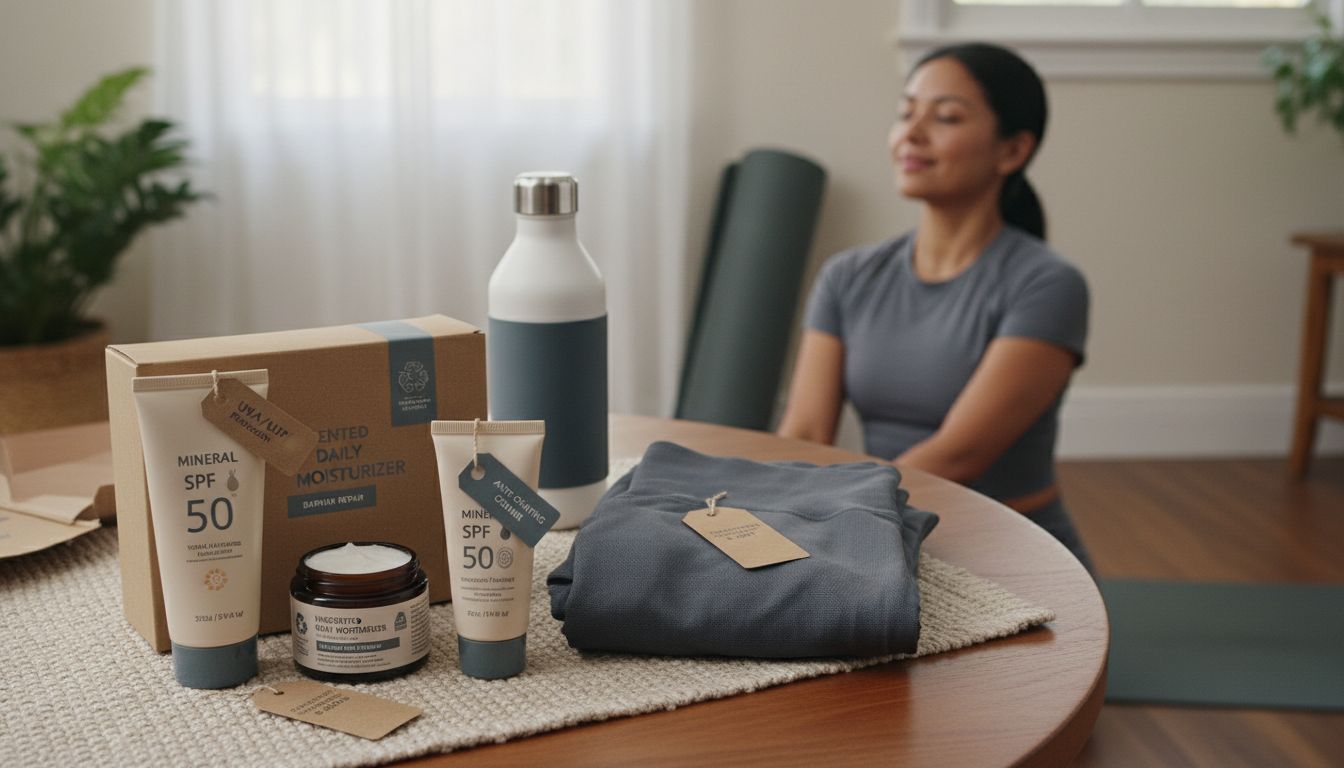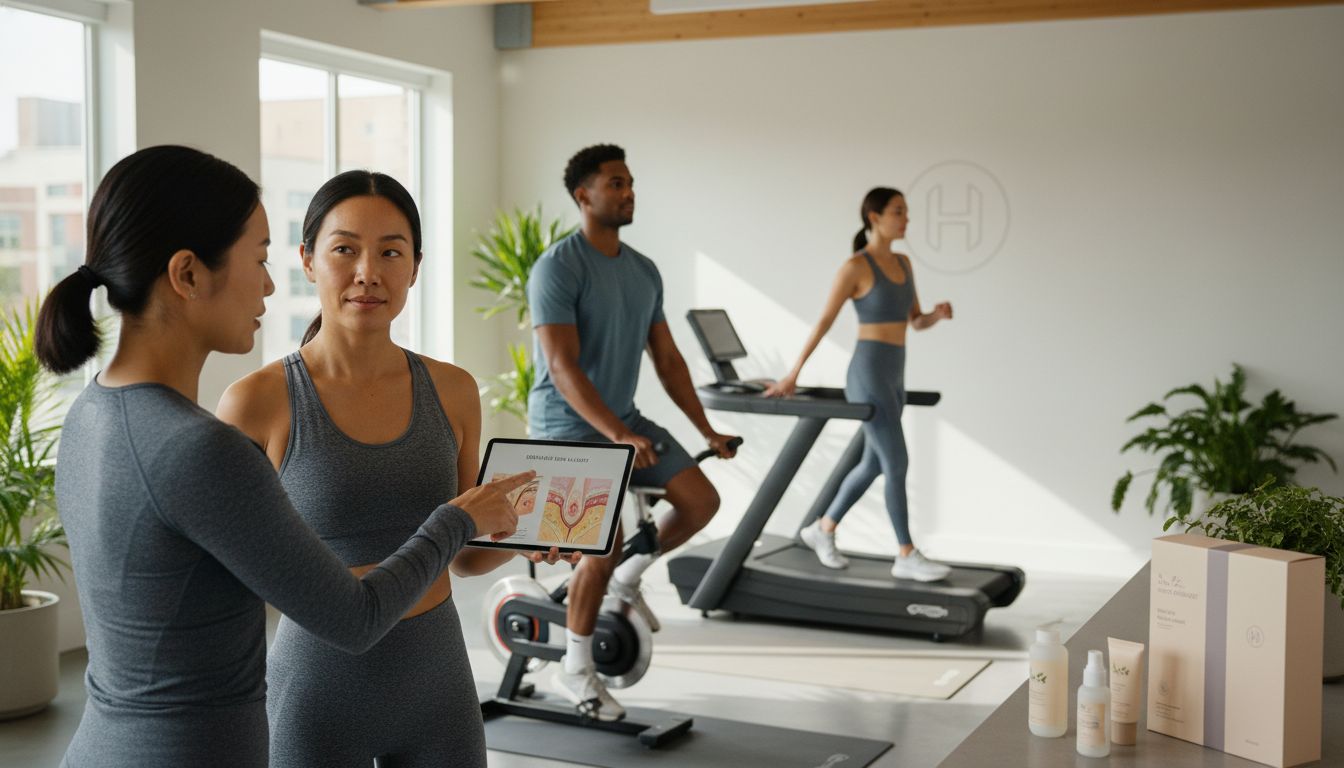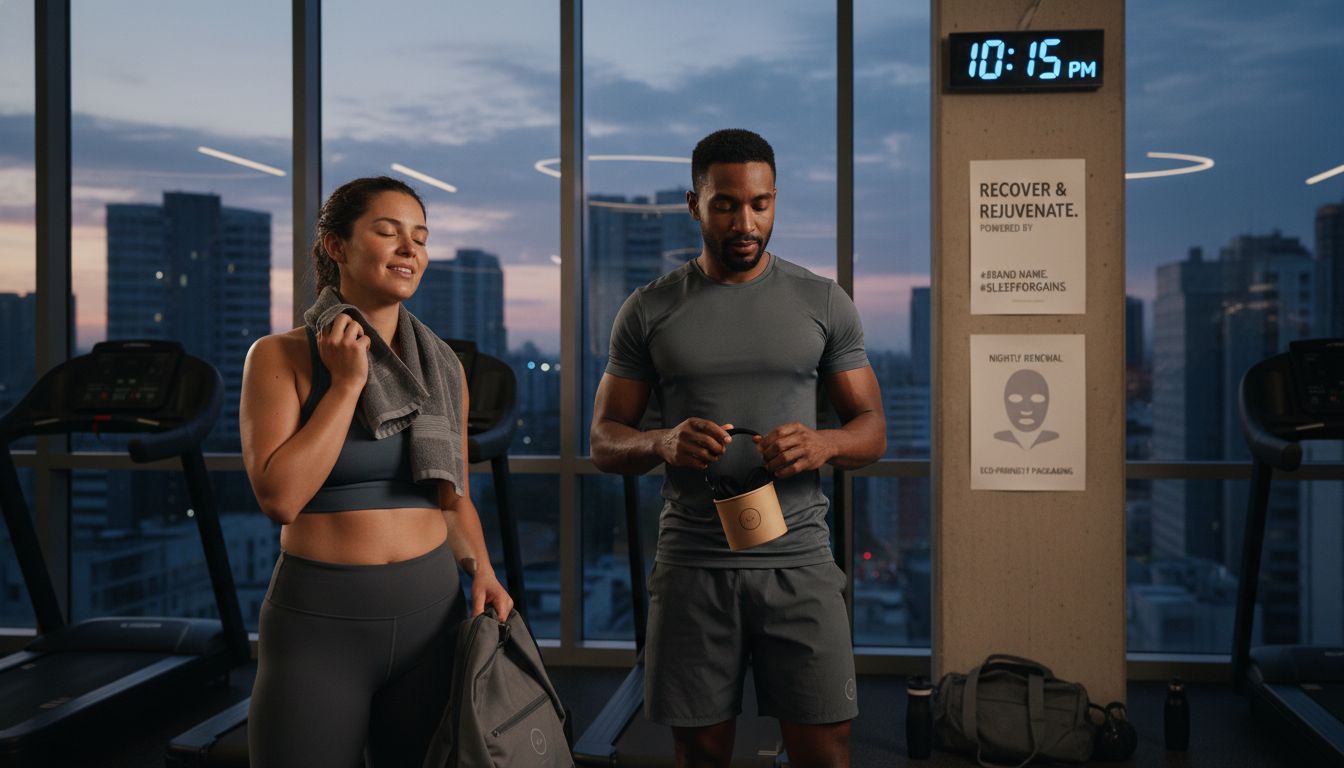Sweat does more than just cool you down—it can trigger surprising skin reactions, especially if you’re among the 89% of people with hyperhidrosis who also report sensitive skin symptoms. Exercise often combines heat, friction, and environmental shifts that push your skin outside its comfort zone. Knowing what causes flare-ups and how to adjust your fitness and skincare routine can mean the difference between constant discomfort and finally feeling confident in your own skin.
Table of Contents
- Sensitive Skin Explained: Exercise and Sweat Factors
- Types of Sensitive Skin and Sweat Triggers
- Choosing Gentle, Effective Fitness Options
- Best Skincare Routines Before and After Workouts
- Recommended Products and Fabrics for Protection
- Common Mistakes to Avoid With Sensitive Skin
Key Takeaways
| Point | Details |
|---|---|
| Complex Relationship | Sensitive skin often correlates with hyperhidrosis, where 89% of individuals report symptoms across sweat-affected and unaffected areas, underscoring a nuanced connection. |
| Understanding Triggers | Environmental factors, temperature variations, and personal responses significantly influence sensitive skin reactions during exercise; identifying individual triggers is essential. |
| Skincare Routine | Implementing a tailored skincare regimen, including gentle cleansing and moisturizing before and after workouts, is crucial to managing sensitive skin effectively. |
| Product and Fabric Selection | Choosing breathable, non-irritating materials and hypoallergenic products can enhance comfort and minimize skin reactions during fitness activities. |
Sensitive Skin Explained: Exercise and Sweat Factors
Understanding sensitive skin during exercise requires more than a surface-level examination. According to research from sweathelp.org, a compelling study involving 637 individuals with primary hyperhidrosis revealed a surprising connection: 89% of participants also experienced sensitive skin symptoms, indicating a complex relationship between sweating and skin reactivity.
The physiological mechanisms behind sensitive skin during physical activity are multifaceted. Environmental factors play a significant role. Research from pmc.ncbi.nlm.nih.gov highlights that temperature variations, heat, and humidity can trigger skin sensitivity, with exercise presenting a perfect storm of potential irritants. These conditions can dramatically impact how your skin responds during and after workout sessions.
Key triggers for sensitive skin during exercise include:
- Increased body temperature
- Friction from clothing and equipment
- Salt and mineral deposits from sweat
- Potential allergenic interactions with workout materials
- Rapid environmental temperature changes
Navigating sensitive skin requires a strategic approach. Understanding your body’s unique responses, selecting appropriate workout clothing, and maintaining proper hydration can help mitigate potential skin reactions. Recognizing that skin sensitivity is not just about sweat, but a complex interplay of physiological and environmental factors, empowers you to create a more comfortable and sustainable fitness routine.
Types of Sensitive Skin and Sweat Triggers
Sensitive skin is not a one-size-fits-all condition, but a complex landscape of individual responses and triggers. According to a national survey from sweathelp.org, individuals with hyperhidrosis often experience sensitive skin symptoms across both sweat-affected and unaffected body areas, revealing that triggers extend far beyond perspiration.
Research from pmc.ncbi.nlm.nih.gov reveals an extensive range of potential sensitive skin triggers, including:
- Environmental factors: humidity, air conditioning, temperature variations
- Atmospheric conditions: dry air, wind, pollution, sun exposure
- Emotional states: stress and psychological fluctuations
- Physical interactions: cosmetics, water contact, clothing friction
These triggers interact dynamically, creating unique skin sensitivity profiles for different individuals.
Some people might react strongly to temperature shifts, while others experience heightened sensitivity during emotional stress. Understanding your personal trigger map becomes crucial in managing sensitive skin effectively.
Classifying sensitive skin involves recognizing individual patterns and responses. Reactive types might experience immediate skin changes, while cumulative types develop sensitivity after prolonged exposure. By tracking your specific reactions during exercise and daily activities, you can develop personalized strategies to minimize skin irritation and maintain comfort.
Choosing Gentle, Effective Fitness Options
Navigating fitness with sensitive skin requires a strategic and thoughtful approach. Research from pmc.ncbi.nlm.nih.gov reveals that long-distance runners demonstrate enhanced peripheral heat dissipation and higher sweat gland efficiency, suggesting that gradual adaptation can be key for individuals with skin sensitivity.
For those with sensitive skin, selecting the right exercise is about minimizing potential irritants while maintaining physical fitness. Low-impact activities provide an excellent starting point:
- Swimming (controlled water environment)
- Yoga (minimal friction, controlled movements)
- Cycling (reduced skin contact with surfaces)
- Pilates (gentle, controlled muscle engagement)
- Walking (minimal skin stress)
Understanding physiological changes is crucial. According to pmc.ncbi.nlm.nih.gov, aging can affect sweat gland function, which means adapting your fitness routine becomes increasingly important. Monitoring your body’s responses, wearing moisture-wicking fabrics, and staying hydrated can significantly reduce skin irritation.
Practical strategies for sensitive skin fitness include warming up gradually, choosing breathable clothing, and exploring home workout essentials that minimize external skin triggers. Remember, the goal is finding a sustainable routine that supports your fitness while respecting your skin’s unique sensitivity.
Best Skincare Routines Before and After Workouts
Managing sensitive skin during fitness requires a strategic, tailored approach. According to research from anndermatol.org, effective skincare management involves understanding the underlying pathophysiology of sensitive skin, particularly its impaired barrier function and inflammatory responses.
Pre-workout skincare focuses on protection and preparation:
- Gentle cleansing with mild, fragrance-free cleanser
- Lightweight, non-comedogenic moisturizer
- Broad-spectrum sunscreen (if outdoor exercise)
- Minimal makeup or skincare products
- Hydrating, calming serum with anti-inflammatory ingredients
Post-workout recovery is crucial. Research from pmc.ncbi.nlm.nih.gov highlights that environmental factors like temperature and humidity significantly impact skin sensitivity. This means your post-exercise routine should prioritize:
- Immediate gentle cleansing to remove sweat and potential irritants
- Cool water rinse to reduce skin temperature
- Hydrating, soothing products with ceramides
- Avoid harsh scrubbing or exfoliation
For a comprehensive approach to managing your skin, explore our guide on skincare routines that can help you develop a personalized strategy tailored to your unique skin needs. Remember, consistency and gentleness are key to maintaining healthy, resilient skin during your fitness journey.
Recommended Products and Fabrics for Protection
Protecting sensitive skin during exercise requires careful selection of both products and clothing materials. Research from pmc.ncbi.nlm.nih.gov highlights that environmental factors like temperature variations and humidity can significantly trigger skin sensitivity, making fabric and product choices critical.
Optimal Fabric Choices for sensitive skin include:

- Moisture-wicking synthetic blends
- Soft, breathable cotton with minimal seams
- Lightweight compression materials
- Antimicrobial fabrics
- Seamless, tagless workout clothing
According to pmc.ncbi.nlm.nih.gov, aging impacts sweat gland function, which means selecting fabrics that enhance breathability becomes increasingly important. Protective product recommendations for sensitive skin include:
- Mineral-based sunscreens
- Hypoallergenic body glide products
- Fragrance-free anti-chafing creams
- Lightweight, non-comedogenic moisturizers
- Gentle, alcohol-free skin protectants
When selecting workout gear, prioritize comfort and protection.
 Explore our guide on fitness essentials to find the perfect balance between performance and skin sensitivity management. Remember, the right fabric and products can transform your workout experience from potentially irritating to completely comfortable.
Explore our guide on fitness essentials to find the perfect balance between performance and skin sensitivity management. Remember, the right fabric and products can transform your workout experience from potentially irritating to completely comfortable.
Common Mistakes to Avoid With Sensitive Skin
Navigation sensitive skin requires understanding its complex nature. According to research from sweathelp.org, a compelling study revealed that 89% of individuals with hyperhidrosis experience sensitive skin symptoms across both sweat-affected and unaffected areas, indicating that oversimplified approaches can be counterproductive.
Critical mistakes to avoid include:
- Ignoring individual skin triggers
- Using harsh, fragranced products
- Overwashing or aggressive cleansing
- Skipping post-workout skincare
- Wearing non-breathable workout clothing
- Neglecting hydration and skin barrier protection
Research from pmc.ncbi.nlm.nih.gov emphasizes that sensitive skin can be triggered by multiple factors like cosmetics, temperature variations, and humidity. Common misconceptions about sensitive skin management often lead people to:
- Assume all skin reactions are sweat-related
- Use one-size-fits-all skincare solutions
- Ignore environmental adaptation strategies
- Panic and over-treat skin irritations
To develop a more nuanced approach, explore our comprehensive skincare routines guide that can help you understand your unique skin needs. Remember, sensitive skin management is about personalized, gentle care, not aggressive intervention.
Protect Your Sensitive Skin While Staying Active
Sensitive skin can turn the joy of exercise into a daily struggle filled with irritation and discomfort. If you find yourself battling redness, itchiness, or flare-ups triggered by sweat, friction, or changing temperatures, you are not alone. The article highlights the complex relationship between sweating and skin sensitivity, emphasizing the importance of choosing gentle skincare routines and breathable fabrics to protect your skin before, during, and after workouts.
Discover tailored solutions that prioritize your skin’s health without compromising your fitness goals. At GNS Beauty & Personal Care, we offer carefully curated products designed specifically for sensitive skin. From fragrance-free moisturizers to mineral sunscreens and anti-chafing creams, our selection helps you maintain comfort and confidence through every sweat session.

Start your journey to a sweat-proof skincare routine today. Explore our collection of fitness-friendly skincare essentials and breathable workout gear for sensitive skin. Visit GNS Beauty & Personal Care now to find products that work with your unique skin needs and keep your fitness routine irritation-free. Don’t wait for sensitive skin to hold you back—take control with expert care designed just for you.
Frequently Asked Questions
What factors contribute to skin sensitivity during exercise?
Key factors include increased body temperature, friction from clothing, salt and mineral deposits from sweat, potential allergenic interactions, and rapid environmental temperature changes.
How can I prevent skin irritation from sweating during workouts?
Use moisture-wicking fabrics, choose breathable clothing, stay hydrated, and implement a consistent skincare routine before and after exercise to minimize skin irritation.
What skincare routine is recommended before and after exercising for sensitive skin?
Before exercising, use a gentle cleanser, lightweight moisturizer, and broad-spectrum sunscreen. After working out, cleanse with cool water, and apply hydrating, soothing products with ceramides to restore moisture.
Are there specific types of exercises better suited for individuals with sensitive skin?
Low-impact activities such as swimming, yoga, cycling, Pilates, and walking are ideal, as they minimize skin contact and reduce potential irritants.








Leave a comment
All comments are moderated before being published.
This site is protected by hCaptcha and the hCaptcha Privacy Policy and Terms of Service apply.